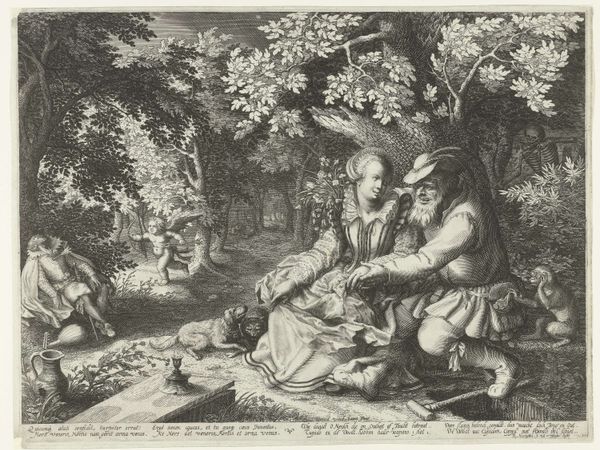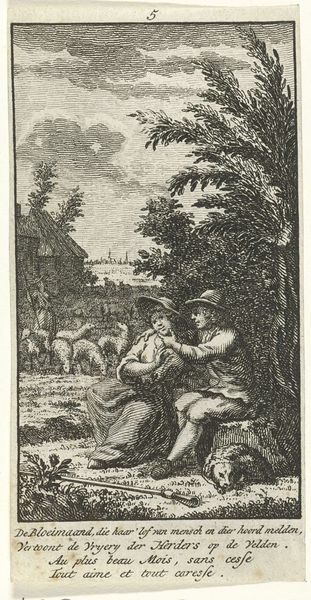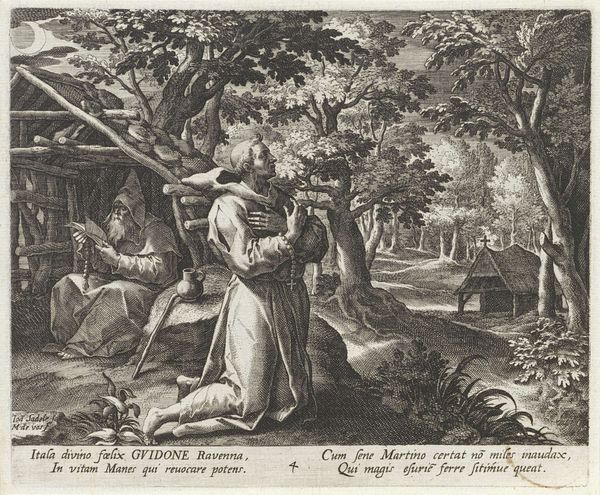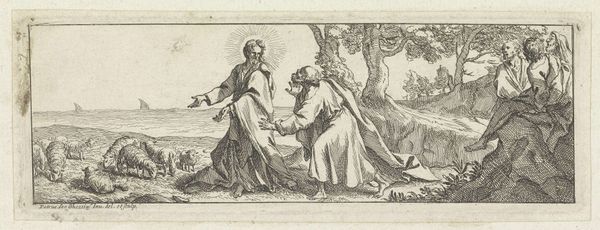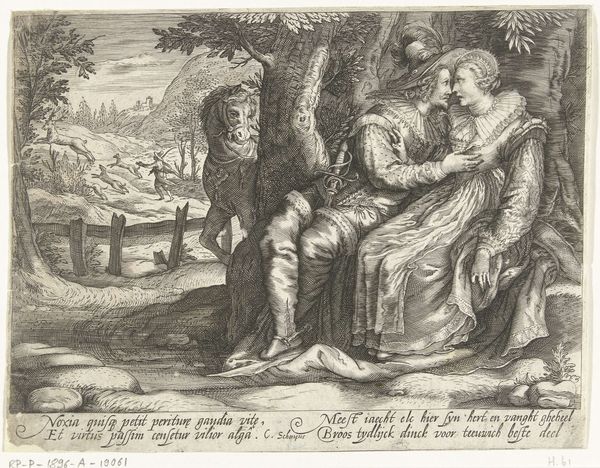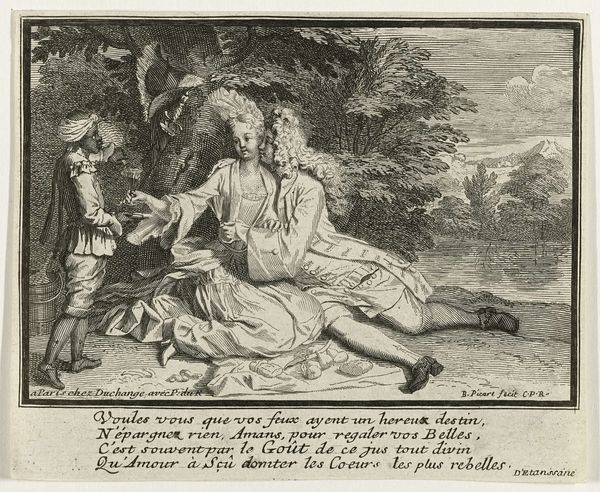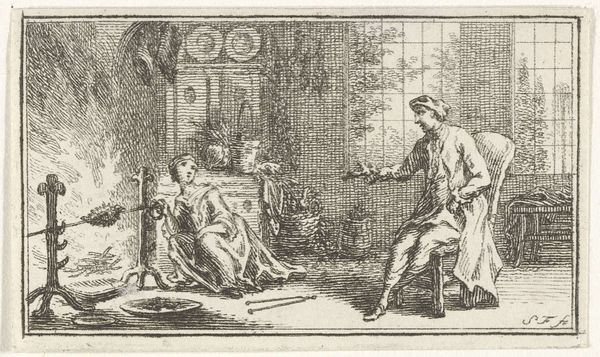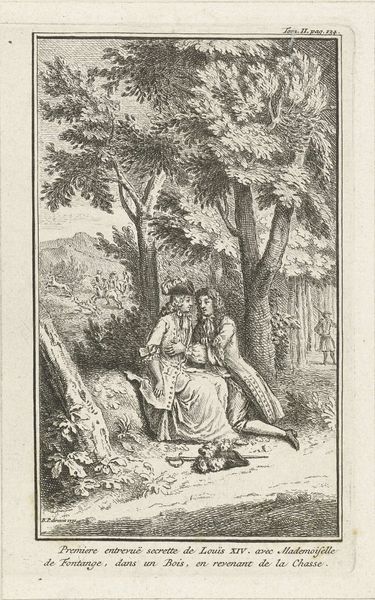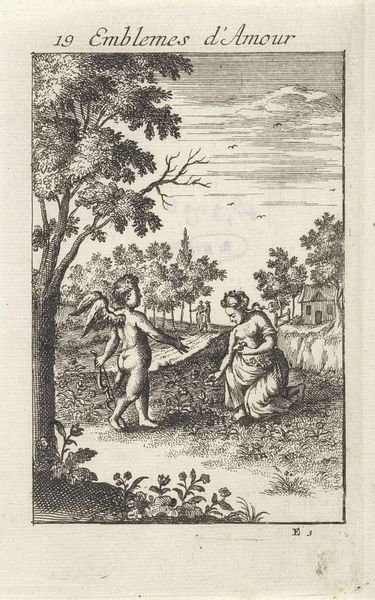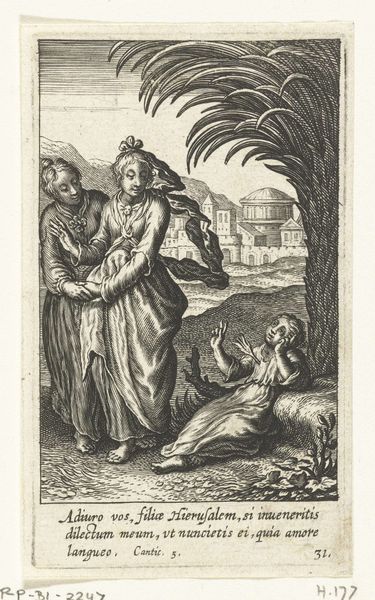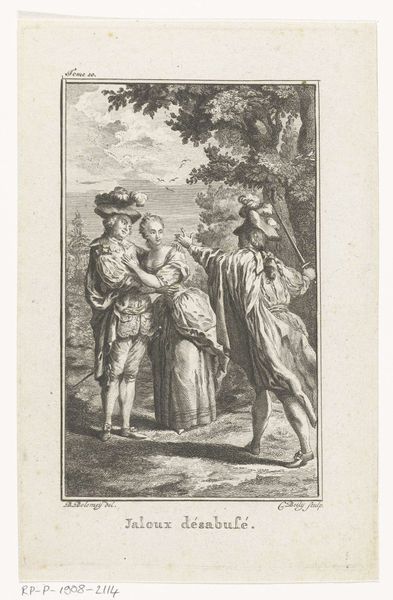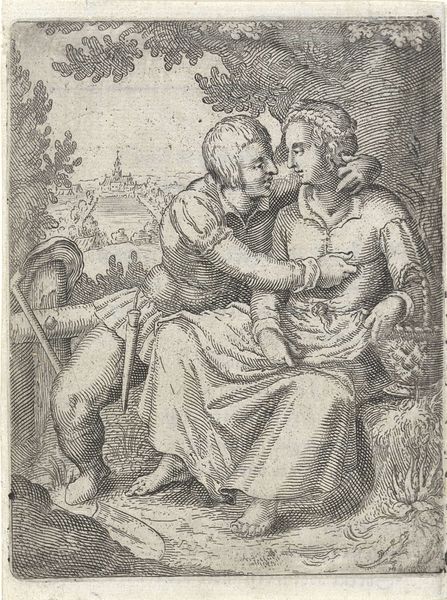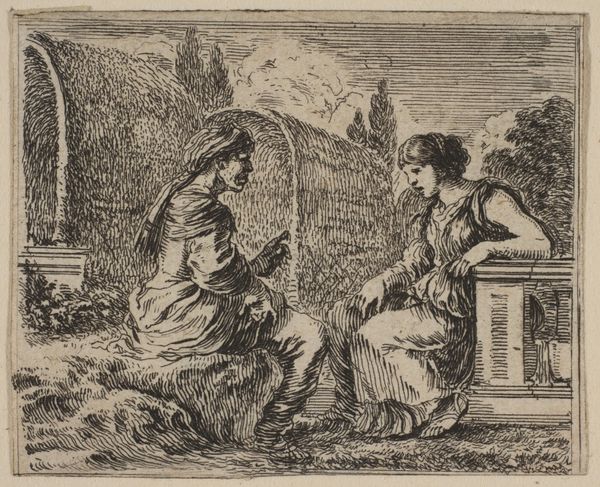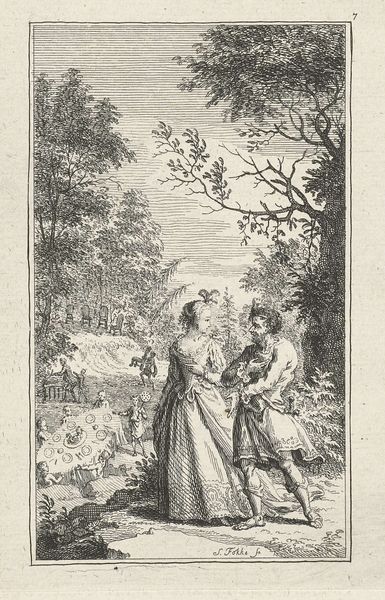
print, engraving
#
narrative-art
#
dutch-golden-age
# print
#
old engraving style
#
landscape
#
figuration
#
genre-painting
#
engraving
Dimensions: height 77 mm, width 111 mm
Copyright: Rijks Museum: Open Domain
Editor: Here we have Willem de Passe's "Man en vrouw in het veld" from 1624, a print rendered in the old engraving style, fitting for the Dutch Golden Age. It depicts a man and woman sitting in a field. It has quite a lovely, serene feel to it, though I’m intrigued by what the man seems to be offering or showing the woman. What do you see in this piece, from your perspective? Curator: Indeed. Consider how dress in the 17th century reflected social standing. Their garments, particularly her lace collar and his cloak, speak to a certain affluence, positioning them within a particular stratum of society. And consider the landscape - a carefully cultivated backdrop, not the wild, untamed nature. Editor: So, the details signal more than just a casual outdoor scene? Is the offering between them a type of symbolic exchange? Curator: Precisely! It could be an offering of affection, perhaps a glove or handkerchief—laden with romantic connotations during that period. More than this, notice how the birds overhead mirror the couple below - it's a carefully constructed echo! The architecture in the distance adds another layer, possibly referencing societal stability and perhaps the permanence that marriage provides. The very placement of the figures in this meticulously crafted landscape subtly reinforces their place in the world, wouldn’t you agree? Editor: I hadn’t considered the layers of societal messaging embedded within. I was too focused on the interpersonal interaction! Thanks; I will definitely be adding all this rich imagery to my notes! Curator: Indeed! Considering these historical contexts helps reveal just how rich visual symbols are in understanding a particular moment. There's always a much larger narrative held within what at first appears to be a simple rendering.
Comments
No comments
Be the first to comment and join the conversation on the ultimate creative platform.
